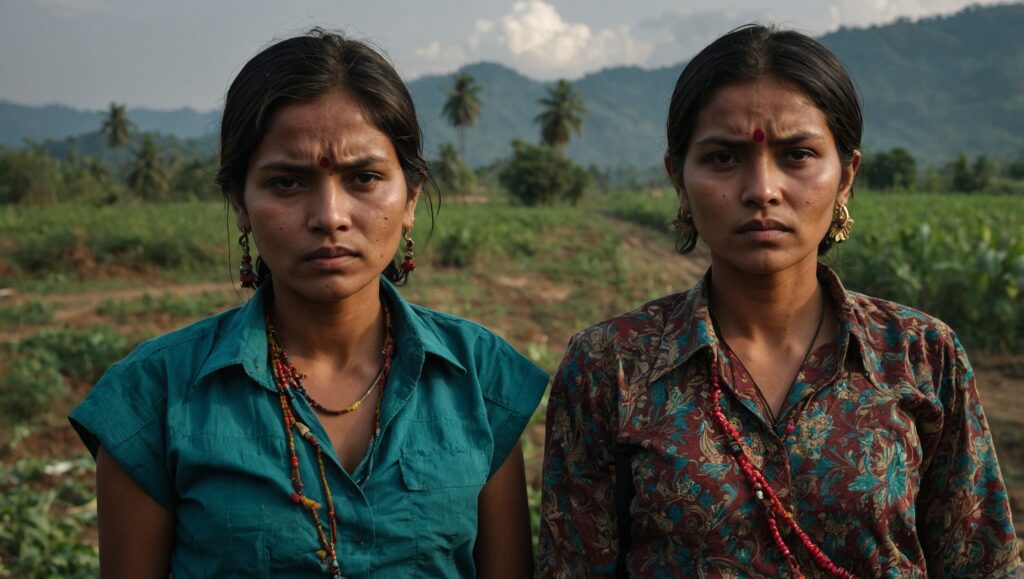Recent reports from the Indo-Nepal border region have revealed a disturbing trend: more and more women are taking part in the operations of drug trafficking. Law enforcement agencies on both sides of the border have been watching this development because they’re concerned with the way drug trafficking is changing in the area. Participation of women in drug trafficking activities has increased and is adding new dimensions to border security and anti-narcotics activities.
Cases of drug smuggling involving women have also seen a spurt in the border district of Bahraich, authorities said. Criminal networks are said to be using this shift in the demographic of drug traffickers as a strategy to avoid detection because women are less often screened at border checkpoints. Those included in the organization and management of drug trafficking networks and even the couriers themselves are women.
The reasons for this trend are complicated and multi-faceted. Citing economic hardship as the most critical factors that drive women into this illicit trade often. Most of these women come from the poorest of backgrounds and are attracted by the promise of ‘quick money. They are particularly vulnerable to exploitation by criminal organizations that can offer drug trafficking as a sound business but with little risk. But the reality is far more dangerous, with serious legal consequences and personal danger facing the people caught up in that trade.
To counteract this new challenge, law enforcement is changing their strategies. Improving the capacity of border security personnel to detect and intercept female drug traffickers is the focus of increased gender-sensitive training with a view to enhancing their capability to detect and intercept female drug traffickers without compromising on respect for human rights. The Indian and Nepalese authorities have also been increasingly working together, advances reflected primarily in intelligence sharing and joint operations against cross-border drug trafficking networks.
It’s not just a law enforcement issue at play when women get involved in drug trafficking because it’s a social concern. The paper highlights the fact that socio-economic interventions must be carried out at a comprehensive level in border regions to promote alternative livelihoods with the aim of reducing the pull of criminal activities. Most vulnerable women in these areas are targeted by NGOs and government agencies trying to implement skill development and employment programs.
A more significant regional issue, the rise of drug trafficking along the Indo-Nepal border, is one. The porous nature of the border, along with the difficulty of adjacent terrain in many regions, serve as an attractive pathway for drug smugglers. This region often serves as a transit for the traffic of Narcotics from Afghanistan and other parts of South Asia to markets in India. The addition of women to this trade brings a new kind of complexity to an already complex problem.
However, health experts around the world warn that this trend carries the risk of having long-term consequences. However, there are fears that women who get into drug trafficking will also be more likely to become drug users, with health and social problems following. The potential for this to have far-reaching effects on families, communities on and around, and land use planning in the border region could exacerbate social problems already present and introduce new conflicts/ problems for public health systems.
While trying to combat this phenomenon, authorities have encountered the need to look for combined approaches to solve this problem. This includes the enhancement of law enforcement but also other factors that lead to what forces women to turn into drug peddlers. Prevention of poverty, providing free education, and enhancing the awareness level of girl children are also highlighted as part of the long-term solution to this problem. It is also crucial that people from border regions participate in the design and implementation of a feasible and coherent strategy for fighting drug trafficking and its social consequences.
The enhanced involvement of women in the drug business, particularly in drug trafficking along the Indo-Nepal border, is a new phenomenon. It emphasizes the flexibility of criminals and other social, economical conditions, which promote such actions. India and Nepal do this. This challenge is not only for INTERDICTION and police but will also focus on sustainable use that addresses the leading cause of this trend. The next few months and years will, however, define the success level of such efforts in preventing the penetration of drug cartels and preventing the plight of vulnerable groups from worsening.


